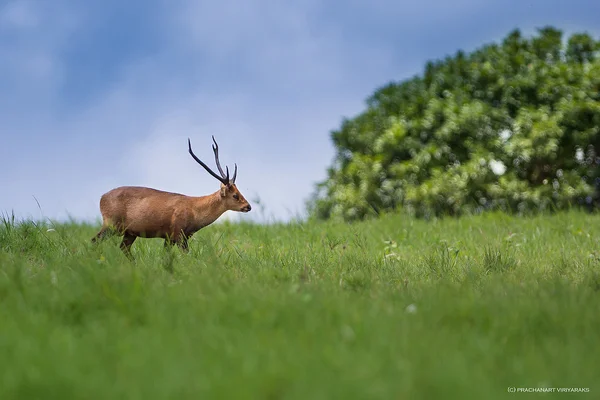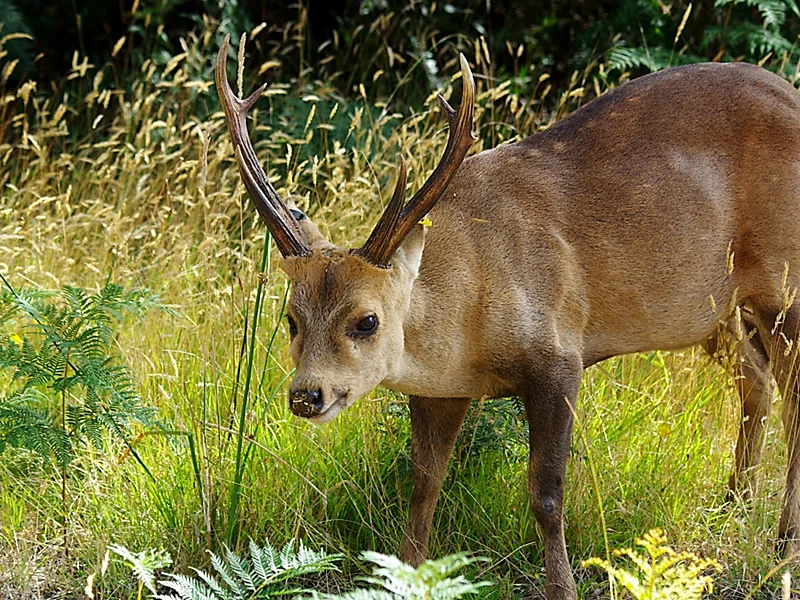The Indian hog deer has recently been spotted for the first time at the Rajaji Tiger Reserve, during the ongoing Phase 4 monitoring for tigers.
About the Indian Hog deer:
- The Indian Hog deer is a small cervid native to the region of the Indian subcontinent and Indo-Gangetic Plain.
- It is also known as Indochinese hog deer.
- They inhabit grasslands, swamps, and dense thickets in the proximity of water bodies such as rivers and lakes.
- The name “hog deer” is derived from their habit of wallowing in mud like a hog.
- They are herbivores, feeding on grasses and other vegetation, and are an important prey species for predators in the ecosystem.
Found in:
- It is found in various countries across South and Southeast Asia, including India, Nepal, Bangladesh, Bhutan, Myanmar, Thailand, Laos, Cambodia, and Vietnam.
- In India, hog deer are found in regions like the Gangetic plains, foothills of the Himalayas, and the northeastern states.
- Protected areas such as Kaziranga National Park in Assam are known for their hog deer populations.
Characteristics:
- The Hog deer are relatively small as compared to other deer species.
- They have a distinct appearance with a dark brown coat, and both males and females have short, and straight antlers.
Conservation Status:
- IUCN: Endangered
- The Indian Wildlife (Protection) Act, 1972: Schedule I
- CITES: Appendix III
About the Rajaji Tiger Reserve:
- The Rajaji Tiger Reserve is situated in the Shivalik range of the Himalayas, in Uttarakhand.
- The reserve is named after Chakravarti Rajagopalachari, a prominent leader of the Indian independence movement and the last Governor-General of India.
- It is a part of Project Tiger, which aims to conserve and protect the population of Bengal tigers in their natural habitats.
- It is the 48th Tiger Reserve of the country.
- The reserve includes 3 national parks- Rajaji National Park, Motichur Wildlife Sanctuary, and Chilla Wildlife Sanctuary.
- The Ganges River flows through the Rajaji Tiger Reserve, adding to the ecological significance of the region.
- It has an elephant corridor that facilitates the movement of elephants between Rajaji and Corbett National Park.
- Vegetation types: Western Gangetic Moist, Northern Dry Deciduous, Low Alluvial Savannah Woodlands, and the Shiwalik Chir-Pine forests.
- Flora: Euphorbiaceae, Lamiaceae, Asteraceae, Sissoo, Sal, Khair, Jamun, Chilla, Ber, Lassora, Aonla, Ficus, Bel, etc.
- Fauna: Bengal Tiger, Asian Elephant, Leopard, Goral, Striped Hyena, Himalayan Black Bear, many species of deer etc.
Other key facts:
- Phase-IV monitoring for tigers, emphasises use of camera traps for obtaining minimum tiger numbers, estimation of population size and using line transect sampling for estimating prey densities.
Ref: Source
| UPSC IAS Preparation Resources | |
| Current Affairs Analysis | Topperspedia |
| GS Shots | Simply Explained |
| Daily Flash Cards | Daily Quiz |



